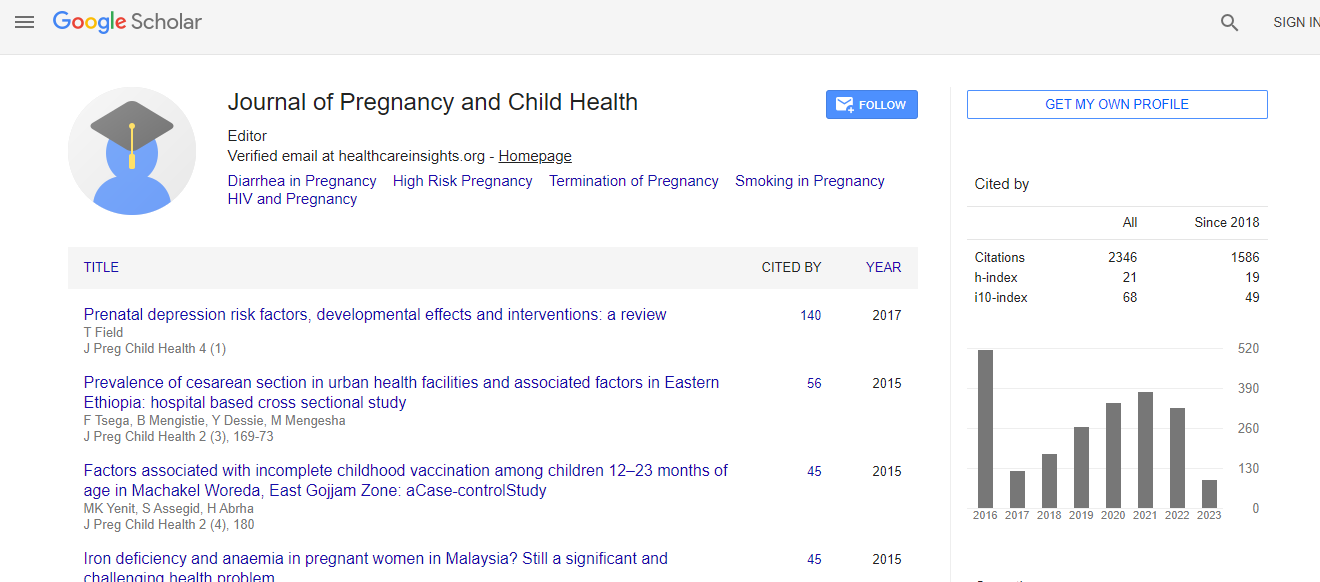Research Article
The Incidence of Exposure to Antibiotics in Children Less Than 6 Years of Age: A Survey in a Portuguese Metropolitan Area
Humberto S Machado1,2,4*, Ana Sofia Marafona2, Joana Patrícia Meireles2, Catarina S Nunes1,3,4, Ana Laura Esteves2, Sofia Marques2, Bruno Bragança2, Daniela Bento2, Diana Brites2, Fátima Costa2, Filipa Andrade2, Guida Maria Santos2, Márcia Vieira-Coimbra2and Sofia Pereira21Anesthesiology Service, Porto Hospital Center, Porto, Portugal
2Institute of Biomedical Sciences Abel Salazar, University of Porto, Porto, Portugal
3Open University, Department of Science and Technology, Delegation of Porto, Portugal
4Centre of Clinical Research in Anaesthesiology, Centro Hospitlar do Porto, Porto, Portugal
- *Corresponding Author:
- Humberto S Machado
Anaesthesiology Service
Porto Hospital Center Porto, Portugal
Tel: 351935848475
E-mail: hjs.machado@gmail.com
Received date: September 15, 2016; Accepted date: October 28, 2016; Published date: October 31, 2016
Citation: Machado HS, Marafona AS, Meireles JP, Nunes CS, Esteves AL, et al. (2016) The Incidence of Exposure to Antibiotics in Children Less Than 6 Years of Age: A Survey in a Portuguese Metropolitan Area. J Preg Child Health 3:292. doi:10.4172/2376-127X.1000292
Copyright: © 2016 Machado HS, et al. This is an open-access article distributed under the terms of the Creative Commons Attribution License, which permits unrestricted use, distribution and reproduction in any medium, provided the original author and source are credited.
Abstract
Background: The contact with antibiotics at an early age may lead to a number of nefarious consequences. Nevertheless, the amount of literature available on the usage of antibiotics in children is scarce. Taking into account the increasing emergence of resistant bacterial strains, it is imperative to study and make society aware of the excessive exposure of children to antibiotics. The purpose of this study was to evaluate the incidence of antibiotic therapy in children under the age of six, in the metropolitan area of Oporto. Methods: Surveys (concerning children born in the metropolitan area of Oporto since 2010) were conducted in several nursery schools, and its answers (n=1031) were subsequently analysed. Our primary outcome was the incidence of exposure to antibiotics in children under 6 years of age in the metropolitan area of Oporto. Statistical significance was set as a p value inferior to 0.05. Results: We verified that 958 children (92.9%) were exposed to antibiotics before the age of six. Additionally, five associations were found between the considered variables: cessation of treatment and number of times the child has resorted to antibiotics in his/her lifetime (p<0,0001); cessation of treatment and average of intake per year (p=0,021, R=0,082); child with chronic disease and number of times of usage during his/her lifetime (p=0,02); eldest child’s age and cessation of treatment (p=0,018); eldest child’s age and number of times of usage during the child’s lifetime (p=0,014, R=0,096). Conclusion: Our study revealed that the exposure to antibiotics in children under six years of age is exceptionally high. Furthermore, the presence of chronic disease seems to be associated with a higher frequency of antibiotic intake. Couples with older children had better antibiotic therapy compliance, as well as higher frequency of antibiotic intake.

 Spanish
Spanish  Chinese
Chinese  Russian
Russian  German
German  French
French  Japanese
Japanese  Portuguese
Portuguese  Hindi
Hindi 
